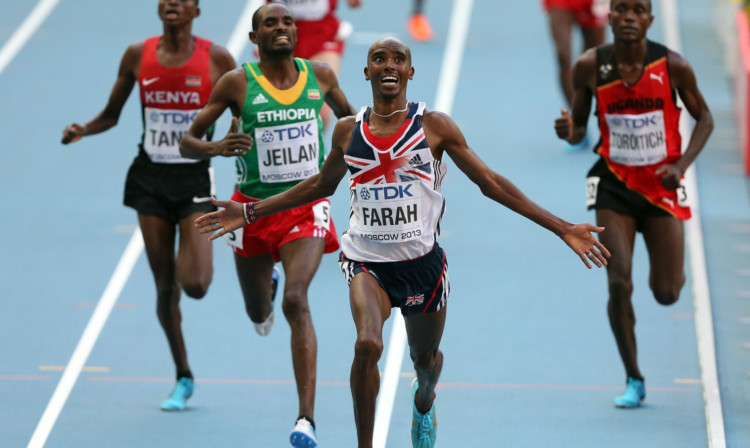
In another generation, Mo Farah could easily have won the BBC Sports Personality of the Year Award for the last three years.
Instead, he was third in 2011 and fourth last year, but that is down to the quality of British sporting achievement and no slight on Farah’s ability.
Mo’s performances in this period rightly mark him down as one of Britain’s greatest-ever athletes.
For years, fans yearned for the days of Sebastian Coe, Steve Ovett and Steve Cram, who dominated middle-distance athletics in the late 1970s and 80s.
All three won Sports Personality between 1978 and 1983. But in Farah, there is a worthy heir to that golden period.
Over the last four summers, he has got better and better, and has relished taking on the scores of Kenyan and Ethiopian runners.
In 2010, Farah won his first major medals with double gold at the European Championships in 5,000 and 10,000 metres.
The following year, he was agonisingly close to winning the 10,000m at the World Championships only to be beaten on the last lap. But he bounced back in style to take 5,000m gold.
That increased expectation ahead of the London Olympics last year. But Mo didn’t mind.
He provided the X Factor on successive Saturday nights at the Olympic Stadium, with 80,000 people cheering him all the way to gold in both long-distance events.
Suddenly, the whole country was doing the Mo-Bot, his signature move upon winning a race!
But while some athletes could have been forgiven for basking in the glory, Farah isn’t one to rest on his laurels.
In fact, the 30-year-old has probably had an even better year in 2013.
He knew he was the man to beat in Moscow at the World Championships, but that didn’t faze him.
Victory was delivered in both the 5,000 and 10,000 metres to make him double World and Olympic Champion, and arguably the best athlete Britain has ever had.
His next target is the Marathon, as he gears up for the race in London in April.
Mo is a success story dating back to the eight-year-old who left Somalia and arrived in Britain to live with his father, barely able to speak a word of English.
His first love was football and he would have loved to have played for Arsenal, but his natural speed marked him out for running.
PE teacher Alan Watkinson noticed his natural gift and took Mo under his wing to keep him out of trouble.
He would accompany Mo to races, as it quickly became clear that the teenager was more than just a good schoolboy runner. Now, on Sunday, he’ll watch to see if his former pupil claims another prestigious award.

Enjoy the convenience of having The Sunday Post delivered as a digital ePaper straight to your smartphone, tablet or computer.
Subscribe for only £5.49 a month and enjoy all the benefits of the printed paper as a digital replica.
Subscribe